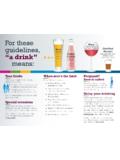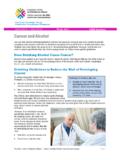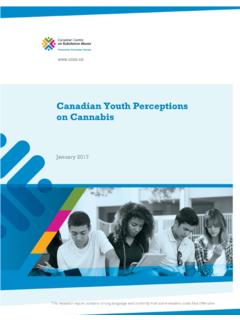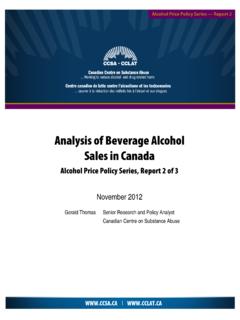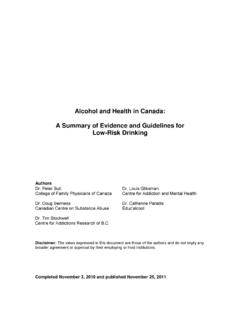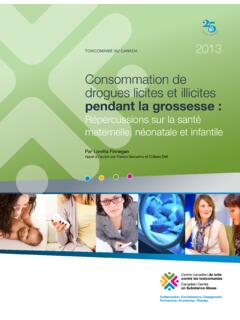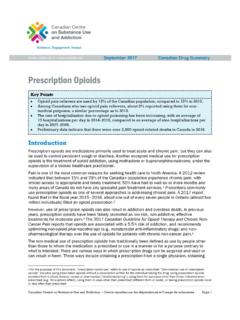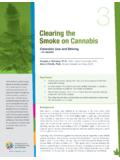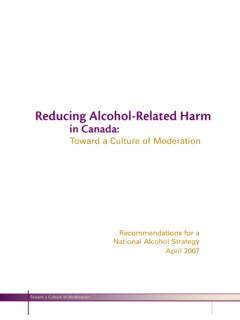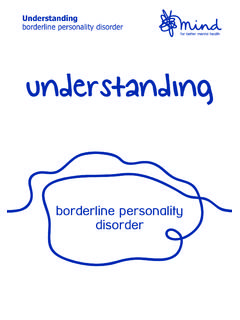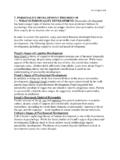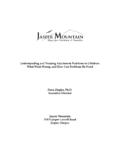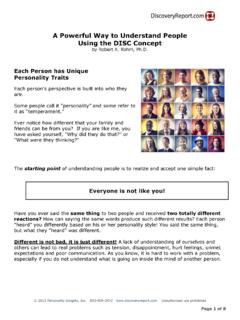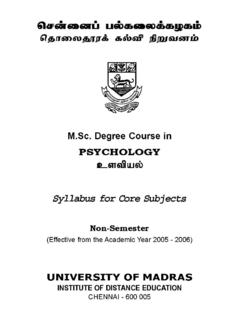Transcription of Substance Abuse in Canada: Childhood and …
1 2014 Childhood and Adolescent Pathways to Substance Use DisordersSUBSTANCE Abuse IN CANADAThis document was published by the Canadian Centre on Substance Abuse (CCSA). CCSA activities and products are made possible through a financial contribution from Health Canada. The views of CCSA do not necessarily represent the views of the Government of subjects in the photographs used throughout this publication are models who have no relation to the content. The vignettes are fictional and do not depict any actual citation: Leyton, M., & Stewart, S. (Eds.). (2014). Substance Abuse in Canada: Childhood and adolescent pathways to Substance use disorders. Ottawa, ON: Canadian Centre on Substance Abuse .
2 Canadian Centre on Substance Abuse 2014 CCSA, 75 Albert St., Suite 500 Ottawa, ON K1P 5E7 Tel.: 613-235-4048 Email: This document can also be downloaded as a PDF at document est galement disponible en fran ais sous le titre : Toxicomanie au Canada 2014 : Voies menant aux troubles li s aux substances dans l enfance et l adolescenceISBN 978-1-77178-153-4 Foreword by Rita Notarandrea 2 Foreword by Dan Goldowitz and Anthony Phillips 4 Introduction 61 understanding the Risk Factors for Substance Abuse 12 Robert Pihl2 The Externalizing Developmental Pathway to Substance Use Disorders 24 Malak
3 Abu-Shakra and Sylvia Cox3 The Internalizing Developmental Pathway to Substance Use Disorders 46 Maeve O Leary-Barrett4 A Developmental Approach to Prevention and Intervention 68 Line Brotnow and Rajita Sinha5 A Call to Action 82 Rajita Sinha and Line BrotnowPrepared for the Canadian Centre on Substance AbuseMarco Leyton and Sherry Stewart, editors Robert PihlMalak Abu-Shakra and Sylvia CoxMaeve O Leary-BarrettLine Brotnow and Rajita SinhaTable of ContentsChildhood and Adolescent Pathways to Substance Use Disorders1 Canadian Centre on Substance AbuseSUBSTANCE Abuse IN CANADA - Childhood and Adolescent Pathways to Substance Use DisordersThe Canadian Centre on Substance Abuse (CCSA) is committed to providing national leadership to advance solutions to Substance Abuse .
4 Part of our leadership involves publishing or promoting cutting-edge research on emerging alcohol- and drug-related issues in Canada and around the world. To this end, CCSA produces a new report in the Substance Abuse in Canada series every two years; the latest being a report released in November 2013 on Substance use during pregnancy. That report examined the maternal, neonatal and early Childhood consequences of abusing substances such as alcohol, tobacco, marijuana, cocaine and heroin. It reinforced the need to address the stigma towards pregnant women with Substance use issues and focus on meeting the needs of both the women and their the effects on the mother, the issues raised in the November 2013 SAIC report highlight important questions about the effects of Substance Abuse and mental health issues on younger children and adolescents.
5 Youth is a time of significant development and change. It is also the period when Substance use most commonly begins. Young people are disproportionately more likely than people in other age groups to use substances, engage in risky patterns of use and experience harms from that use. Evidence-informed approaches to drug prevention can have a significant impact on youth Substance Abuse and contribute to the overall health and well-being of young people. And so CCSA broke with its usual schedule to build on the findings and recommendations of the maternal and neonatal health report by publishing this report as a second installment coupled with present report focuses on how biological, behavioural and social factors during the early developmental years play a role in later-life Substance Abuse , as well as in concurrent mental and physical health problems.
6 The report examines how various developmental pathways can lead to Substance Abuse , with the main goal being to develop more effective prevention, detection and early intervention efforts for young people and their families. Involving the family is important because parents need to know how to support their child and it has been shown that enhancing parental nurturing improves factors are at play to make one person more likely to Abuse substances than another, including genetics, brain abnormalities, behaviour, personality styles and the environment at home and at school. No one set of experiences or factors directly results in later-life Substance Abuse because every individual and his or her experiences are unique.
7 A dynamic interplay among genetic, biological, social and environmental experiences and vulnerabilities begins the moment a child is born. This interplay points to the need to ensure that intervention strategies are dynamic and that they target specific developmental ages, key risk and protective factors, and the larger social environment. This report also suggests that intervention efforts should focus on both children of middle school age and youth during their teenage years. If risk factors, including behaviours and vulnerabilities, can be identified and acted on earlier in life, then interventions might not have to be as significant as those needed by a teenager or young adult who has progressed further into Substance Abuse .
8 We need further research to help identify and classify these early signs of risk. As importantly, as a society we need to ensure that those protective factors that have been shown to be most effective in improving outcomes are put into place in the schools and communities in which our youth live so that they have the supports they need to lead a life free of the harms of Substance Abuse . This integrated view of Substance Abuse is most effective for identifying risk and putting in place targeted prevention efforts. We must therefore consider both the presence of risk factors as well as the absence of protective factors in looking at how Substance Abuse patterns develop.
9 These risk and protective factors all have a role to play in informing health promotion, prevention and early intervention concept is in line with the findings of a groundbreaking report released by the FrameWorks Institute on how to enhance a common understanding of the developmental causes of addiction (Erard, 2012). The report proposed using the term brain fault lines as an analogy with geological fault lines to find more effective ways to talk about how some individuals are 2 ForewordSUBSTANCE Abuse IN CANADA - Childhood and Adolescent Pathways to Substance Use Disorders1 Canadian Centre on Substance AbuseSUBSTANCE Abuse IN CANADA - Childhood and Adolescent Pathways to Substance Use Disordersmore susceptible to addiction because of complex interactions between genetic and environmental factors.
10 As the real fault lines sometimes result in earthquakes, the metaphorical fault lines sometimes result in addictions. We can help prevent fault lines from developing, we can minimize the chances that they will turn into addictions and we can defend against the damage from happening again. This latest Substance Abuse in Canada report examines how such fault lines could be created and suggests ways in which it might be possible to better manage, reduce or prevent their full expression. These ways include prevention initiatives that look at Substance Abuse from a developmental perspective, as well as interventions across the spectrum of child, family and community.
